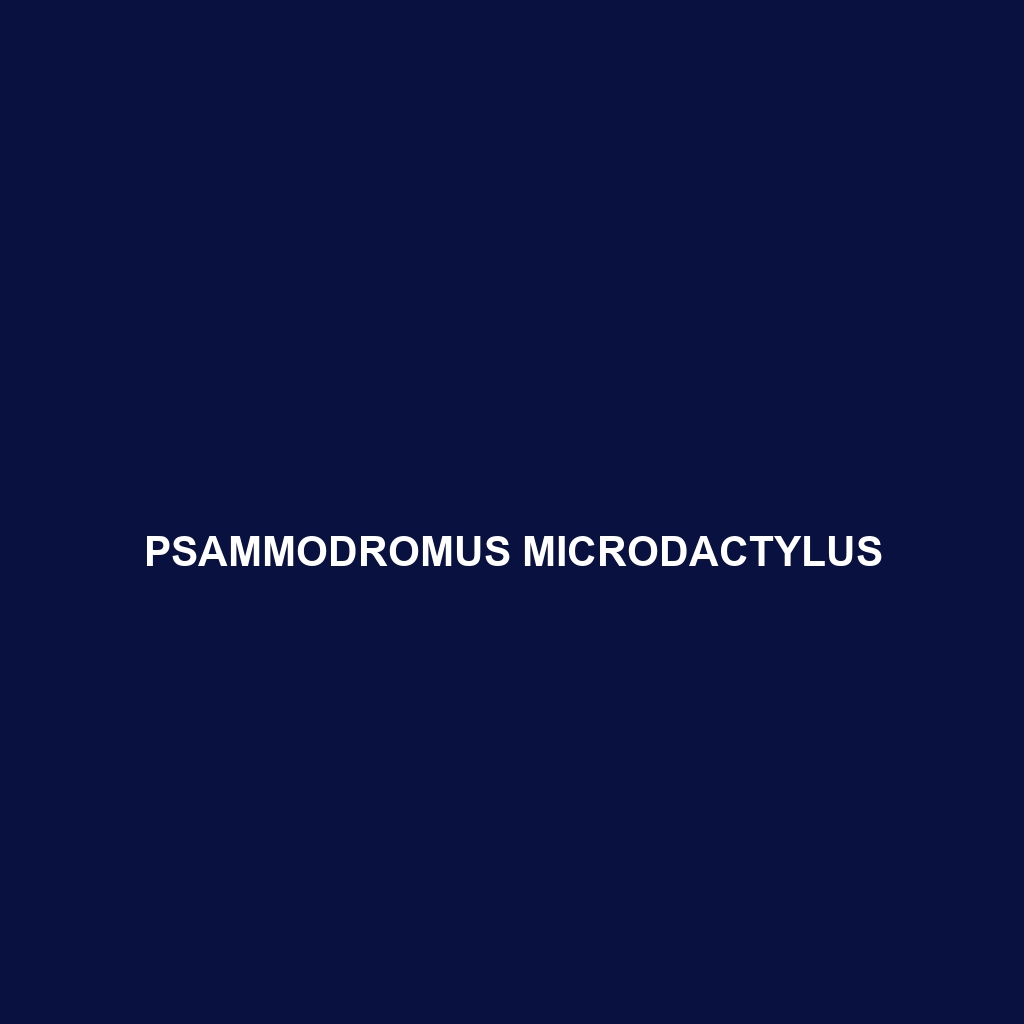<b>Ptyodactylus rivapadiali</b>, commonly found in the arid regions of North Africa, including the Saharan desert, is a nocturnal gecko adapted to harsh environments. This slender insectivore, reaching lengths of 10 to 15 cm, boasts excellent camouflage and specialized adhesive pads for climbing rocky terrains while playing a vital role in controlling insect populations.
Tag: North Africa
Psammodromus microdactylus
Psammodromus microdactylus, commonly known as the sand racer, is a small, slender lizard found in arid deserts and grasslands of southern Europe and northern Africa. Notable for its agility and cryptic coloration, this nocturnal insectivore burrows into loose sandy soil for protection and plays a crucial role in maintaining ecological balance.
Ptyodactylus rivapadiali
<b>Ptyodactylus rivapadiali</b>, commonly found in the arid regions of North Africa, including the Saharan desert, is a nocturnal gecko adapted to harsh environments. This slender insectivore, reaching lengths of 10 to 15 cm, boasts excellent camouflage and specialized adhesive pads for climbing rocky terrains while playing a vital role in controlling insect populations.
Psammodromus microdactylus
Psammodromus microdactylus, commonly known as the sand racer, is a small, slender lizard found in arid deserts and grasslands of southern Europe and northern Africa. Notable for its agility and cryptic coloration, this nocturnal insectivore burrows into loose sandy soil for protection and plays a crucial role in maintaining ecological balance.
Mesalina martini
Mesalina martini, commonly known as Martini's Mesalina, is a desert-dwelling lizard native to North Africa and the Arabian Peninsula, characterized by its slender body, agile movement, and insectivorous diet. This species thrives in arid habitats, plays a vital role in controlling insect populations, and exhibits unique behavioral adaptations suited for survival in harsh, sandy environments.
Macroprotodon cucullatus
Discover the Hooded Snake (Macroprotodon cucullatus), a small, agile predator found in North Africa and the Canary Islands, known for its distinctive pointed head and nocturnal behavior. This adaptable species thrives in diverse habitats, primarily feeding on small vertebrates while playing a crucial role in maintaining ecological balance.
Eryx jaculus
Common Name Eryx jaculus Scientific Name Eryx jaculus Habitat Eryx jaculus, commonly known as the sand boa, is primarily found in various arid regions across North Africa, the Middle East, and parts of Southern Europe. This species thrives in environments with loose, sandy soils, which enable it to burrow efficiently. Typical habitats include deserts and […]
Eirenis occidentalis
Discover the fascinating <b>Eirenis occidentalis</b>, a non-venomous snake thriving in the arid regions of the Western Mediterranean, known for its slender body, effective camouflage, and nocturnal behavior as an insectivore. This species plays a crucial role in maintaining ecosystem balance by controlling insect populations while serving as prey for larger predators.
Eirenis aurolineatus
The Eirenis aurolineatus, commonly known as the yellow-lined snake, is a slender, diurnal insectivore found in arid regions of North Africa and the Middle East, characterized by its distinctive yellow and brown bands that provide effective camouflage. This adaptable species plays a crucial role in controlling insect populations while contributing to the ecological balance in its habitat.
Echis coloratus
Discover the fascinating Echis coloratus, or horned viper, a stunning desert snake known for its unique triangular head, distinctive horn-like scales, and exquisite camouflage. This carnivorous reptile thrives in arid North African and Middle Eastern habitats, using its ambush hunting skills and potent venom to prey on small mammals, birds, and lizards.









